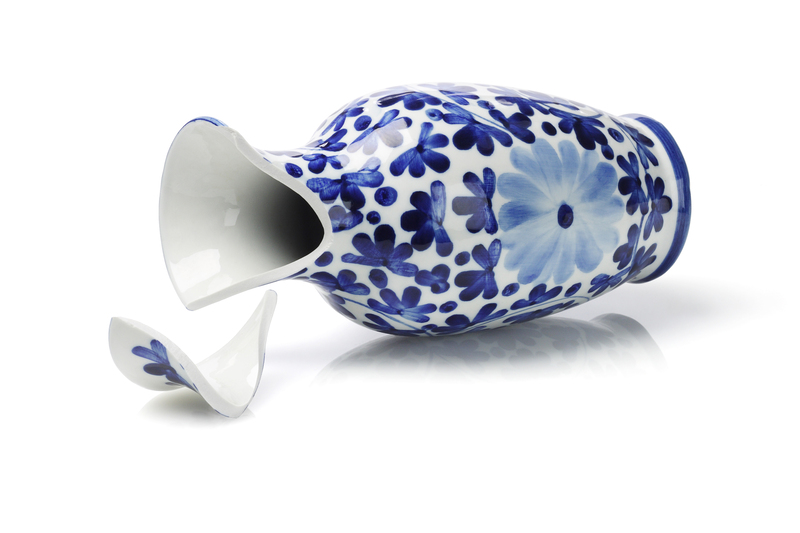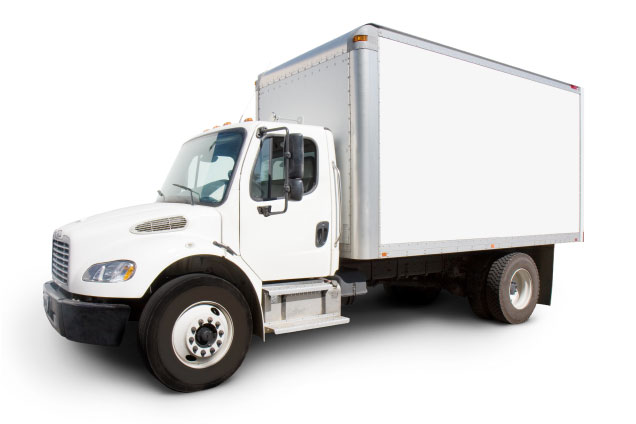Proper Storage Techniques for an Idle Freezer
Posted on 26/06/2025
Proper Storage Techniques for an Idle Freezer
There are several reasons why a freezer might remain unused -- perhaps you've upgraded to a larger model, are in the midst of moving, or simply have a seasonal surplus. Regardless of the cause, proper storage techniques for an idle freezer are vital to prolonging its lifespan, maintaining its efficiency, and ensuring safety when it's placed back into service. In this comprehensive guide, we'll share actionable tips to help you store your unused or dormant freezer the right way.

Why Proper Idle Freezer Storage Matters
An idle or unused freezer is not just a piece of dormant equipment; it remains a significant investment that requires care. Neglect can lead to internal damage, odor buildup, mold growth, and even mechanical failure--complications that are both inconvenient and costly. By following best practices for storing your inactive freezer, you're protecting its reliability and value for years to come.
- Prevents mold, mildew, and unpleasant odors
- Preserves mechanical and electrical systems
- Ensures readiness when returning the freezer to use
- Avoids pest infestations
- Maximizes the freezer's operational lifespan
How to Prepare a Freezer for Extended Inactivity
Setting up your freezer for safe idleness involves a step-by-step approach. Below, we outline the best techniques, from cleaning and drying to power management and long-term placement.
1. Remove All Food and Contents
Before storing an idle freezer, it's crucial to empty it completely. Any leftover items, no matter how small, can lead to contamination, attract pests, or cause foul odors.
- Discard expired or old food
- Transfer salvageable items to an active freezer or cooler
- Double-check for forgotten freezer packs or hidden items
2. Thoroughly Clean the Freezer's Interior
Once emptied, clean the inside using a gentle solution of warm water and mild soap. Avoid harsh chemicals that can leave behind toxic residues or damage interior surfaces.
- Unplug the freezer and let it reach room temperature
- Wipe shelves, bins, and every surface
- For stubborn spots, use a paste of baking soda and water
- Wipe down gaskets and seals to maintain proper closure integrity
- Dry all surfaces with a soft towel
3. Defrost the Freezer Completely
Built-up ice can harbor moisture, which encourages mold growth and damages your appliance over time. Fully defrosting your freezer before storing it is essential.
- Allow freezer ice to melt naturally -- never use sharp objects to speed up the process
- Collect melted water with towels or a basin
- Ensure every compartment and crevice is ice-free
4. Ensure Complete Dryness
Moisture is the enemy of idle appliances, especially freezers. After cleaning and defrosting, allow the freezer to air dry with the door open for several hours. You may use absorbent towels or a fan to expedite drying.
Tip: Place an odor-absorbing agent, like an open box of baking soda or activated charcoal, inside to help with any lingering smells.
5. Secure the Door
Never store a dormant freezer with the door tightly closed, as this creates a perfect environment for fungus and bacteria. Instead:
- Leave the door ajar using a spacer or block
- Secure the door in a partially open position with tape or a dedicated wedge to ensure constant air circulation
- If storing in a location accessible to children or pets, consider attaching a lock or child-proof device to prevent accidental closure
Choosing the Right Location for Storing an Idle Freezer
Proper idle freezer storage isn't just about internal preparation -- location is equally important. Here's what to consider:
Temperature and Humidity Control
- Store in a dry, well-ventilated area to prevent moisture accumulation
- Avoid places with rapid temperature fluctuations (like garages or sheds with no climate control)
- Ideally, the ambient temperature should remain between 50?F and 90?F (10?C and 32?C)
- Use a dehumidifier if necessary to minimize the risk of mildew
Avoid Direct Sunlight and Water Exposure
- Keep away from windows or outdoor exposures -- UV rays can degrade plastics and seals
- Ensure the freezer is positioned well above floor level in flood-prone areas
- Never store outdoors unless the appliance is designed for exterior use
Allow Adequate Air Circulation
- Leave several inches of space around the freezer's sides and back
- Prevent stacking heavy items on top as this can damage the lid and insulation
Maintaining an Idle Freezer: Long-Term Care Tips
Even when unused, a freezer benefits from occasional attention. Here are some maintenance recommendations to keep your appliance in top condition:
- Inspect the interior monthly for dust, cobwebs, or any signs of moisture
- Wipe down exterior surfaces to prevent buildup and maintain finish
- Rotate odor absorbents (baking soda, charcoal) every two months
- Periodically move or open the door more widely to ensure adequate airflow
- Check the power cord and plug for pests or moisture if the appliance is unplugged
Should an Idle Freezer Be Plugged In or Unplugged?
Deciding whether to leave the freezer plugged in depends on the expected period of inactivity and its storage location.
Unplugging the Freezer
- Best for extended periods of non-use (weeks or months)
- Prevents unnecessary energy use and wear on components
- Reduces fire risk
Keeping It Plugged In
- Consider only for short, intermittent inactivity
- Allows the freezer to remain cold for immediate reuse
- Maintain minimal contents inside to discourage odors
Note: If storing unplugged, ensure thorough cleaning and drying to prevent mold and odor development.
How to Restart a Dormant Freezer
When you're ready to put your idle freezer back into service, follow these essential steps to ensure safe, efficient operation:
- Inspect the freezer inside and out, looking for dust, debris, or insects.
- Wipe down the interior and exterior, removing any odor-absorbers placed during storage.
- Check the door seal to ensure it's not cracked or stiff.
- Plug in the appliance and allow it to cool (usually takes several hours).
- Only once it reaches the correct temperature, begin adding food items.
For best results, refer to your manufacturer's reactivation guidelines for idle freezers.
Common Mistakes to Avoid When Storing an Idle Freezer
- Leaving the freezer door closed tightly (can result in severe mold buildup)
- Storing in a humid or poorly ventilated area
- Neglecting to clean or fully dry the interior
- Forgetting to remove all food, including small crumbs
- Ignoring regular check-ins during long-term storage
Additional Freezer Storage Tips for Various Scenarios
When Moving to a New Home
- Secure all shelves and bins with tape or packing materials
- Ensure the freezer is dry and clean for transport
- Keep the door slightly ajar during transport to avoid odor buildup
Seasonal Freezer Shutdown
- Follow all cleaning, drying, and odor-removal steps
- Store in a climate-controlled space, if possible
- Label the freezer to indicate it is not in active use
Storing in Shared Spaces (Basement, Garage, Storage Unit)
- Use a lock or childproof latch for safety
- Elevate the appliance on pallets to protect against possible flooding
- Cover with a breathable cloth (not plastic), to shield from dust while allowing air circulation
Environmental and Safety Considerations
Responsible freezer storage also means protecting your household and the environment:
- Never store an unplugged freezer where children can access it, due to entrapment risk
- Ensure extension cords (if used) are of appropriate rating and condition
- Recycle or dispose of old appliances according to local hazardous waste regulations

Frequently Asked Questions About Proper Storage for Unused Freezers
How long can a freezer remain idle?
With correct storage methods, a freezer can sit unused for several months -- or even years -- without issue. Regularly inspect and maintain the appliance for the best outcome.
Will leaving a freezer unplugged damage it?
No, provided you've thoroughly cleaned, dried, and ventilated the unit. Be sure to follow all the guidelines above for safe idle storage.
Can I store items inside an idle freezer?
It's best not to. Even unused, the humid environment can damage belongings or lead to odors. If you must, use only completely dry, non-perishable goods and check them regularly.
Conclusion: Protecting Your Investment with the Right Freezer Storage Techniques
An unused freezer doesn't have to be a liability. By following the best practices for storing an idle freezer, you ensure that your appliance remains odor-free, damage-resistant, and ready for years of reliable service. Proper cleaning, drying, ventilating, and safe placement are key to maintaining your freezer in excellent shape during downtime. Remember, a little preparation today can save you significant repair costs and hassle in the future. Apply these proven idle freezer storage techniques and rest easy knowing your investment is protected.





